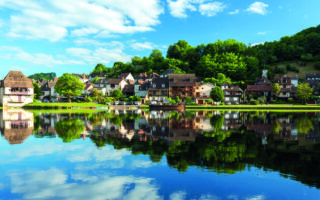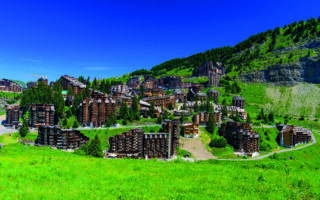Highlights of Haute Vienne
Essential Reading
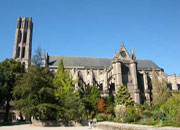

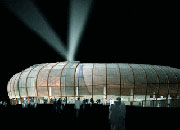 |
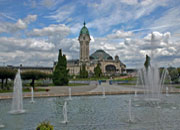 |
Haute Vienne has it all, nature and nightlife
Haute Vienne derives its name from the river that runs though the department. As the river is also the main waterway through Vienne, the “Haute” was added as the department is situated at a higher altitude than its neighbour. It has good access links, with the A20 motorway running the length of the department and regular flights to and from the UK via Limoges Bellegarde airport as well as several high speed train links . Although possibly not as popular a tourist destination as the Correze and Creuse, it has the advantage of being home to the regional capital, Limoges. Here you can find a myriad of interesting shops as well as all the high street chains. Limoges provides much of the employment in the department as well as a variety of entertainment, theatre, sports events, exhibitions and much more.
Haute Vienne has a diverse economy, many still earning their living in traditional agricultural activities, but the area is also forward thinking. The Esther Technopole at Limoges is home to many high tech and international businesses, they even host an international web design competition. Perhaps though, it is the world renowned ceramic and enamelling industries that the area is most famous for. The department has a long tradition of mining too. The discovery of a pure form of kaolin in the late 18th century, established the basis of the famous Limoges porcelain industry. Gold was also once mined in Haute Vienne and tiny nuggets can still be found in some of the department’s streams and rivers. Limoges celebrates its porcelain and enamelling heritage with the national museum Adrien Dubouché and the municipal museum of Evêché , both housing world class collections. The city is also home to the ceramics research center (KRAFT), a place where artists, designers, technicians, students and companies work to create new methods and techniques.
There are many good schools in the department with only 2% of the 16-18 years leaving the school system with no qualifications whereas the national average is around 10%. The city of Limoges also has a university as well as world leading university hospital.
The department has a packed cultural programme too, with several theatres including the spectacular Grand in the city of Limoges. The recently built Zenith stadium regularly hosts major artists and events. There is even a school for circus arts in the town of Nexon and many other theatrical groups such as the Limoges Francophonies putting on regular entertainment.
Nature is part of everyday life in Haute Vienne. Tourists visit in all seasons to enjoy the rolling landscapes, forests, lakes and rivers. Chestnuts, oaks, spruces and Douglas fir all line the landscape of this breathtaking department, while picturesque villages and stunning castles grow from the granite landscape.
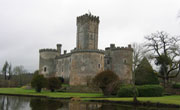 |
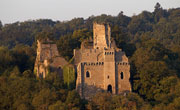 |
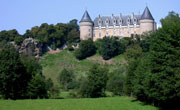 |
Haute Vienne has many well preserved historic buildings such as the Abbeys at Solignac and Châteauponsac, or the castles of Châlus, Châlucet, Montbrun and Rochechouart. The department is also home to the breathtakingly moving town of Oradour sur Glane, a permanent memorial to man’s inhumanity to man.
 |
 |
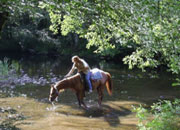 |
There are over 2,000 km of marked paths for walking and rambling, the varied countryside is also well suited to horse riding , with its many shady paths and its magnificent green woodlands. Haute Vienne is an angler’s dream with both running and still waters plentiful in rivers, lakes and ponds, there are around 7,000 km of waterways, of which 300 km are 2nd class and 6,700 km are 1st class. The Haute-Vienne is also perfect for mountain biking with many marked routes with popular sites at Chateauneuf-la-Forêt and Vaulry. Canoeing is another popular activity as are most water sports with waterskiing at the lakes of Bujaleuf, Vassivière , Saint-Pardoux and Meuzac, where each summer an international competition is held. The two larger lakes of Vassivière and Saint-Pardoux are home to several sailing schools, with regular competition and boat hire. Both Limousin’s relief and climate make it ideal for golf providing perfect greens and wide open spaces. There are three magnificent 18-hole courses in the Haute-Vienne and one 9-hole course.
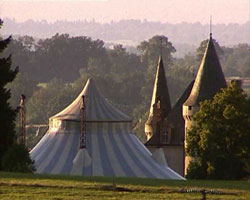 |
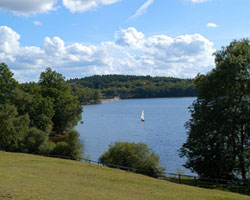 |
In short
Haute Vienne has many quaint towns and villages as well as lots of well preserved historical sites and buildings. Although possibly not as popular a tourist destination as the Correze and Creuse there is still so much on offer for lovers of nature and outdoor activity. The city of Limoges is the capital of the department as well as being the capital for the whole region, providing employment and entertainment. Easy accessibility to the city from many towns in this department makes it a good choice for anyone looking for a little more life. There are theatres, stadiums and cinemas, and a night life befitting a lively University town. The city is also home to the region’s modern University hospital and has good access links.
Share to: Facebook Twitter LinkedIn Email
More in activity, boat, businesses, countryside, courses, schools, summer
By FrenchEntrée
Leave a reply
Your email address will not be published. Required fields are marked *

